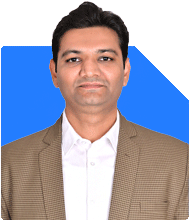
Sir/ma'am. I am currently in class 12th and enrolled in a jee coaching. I joined coaching in class 11th but everything went wrong. I didn't studied seriously and took classes very lightly. Days passed months passed and I created a huge backlog. Like the problem is I don't know how to study how other students manage time. If I study one subject I drag it the whole day and solve handful of questions.JEE study is very intense and I can't. I missed a precious year and my coaching is very good. Fault is in me. I wasted whole year and now in 12th I have no conceptual clarity and basics are weak. Also half 12th is over but still I am not on track. I regret always and cry all the time. I have big dreams but not the courage to act on it. I have packed my coaching modules because I can't understand anything. And started studying NCERT of 11th and 12th together. I am really tensed about my future. My father has also invested a huge amount in coaching but I wasted all. I am the worst child. For now I am thinking that I should focus on boards only. And then thinking of taking a drop to patiently study coaching modules and then reapply for JEE. But I doubt myself wasting one more year. I don't know. Please guide
Ans: Vaishnavi, To catch up and confidently crack JEE within 6–8 months while strengthening fundamentals, follow these Around 80 practical steps under four pillars—Planning & Time Management, Concept Building & Practice, Revision & Self-Assessment, and Well-being & Motivation. Additionally, explore five backup engineering exams and ten NIRF-ranked private universities accepting JEE or school scores. 1. Draft a master timetable allocating 6 days/week with one rest day. 2. Break six months into two phases: Months 1–4 (learning and practice) and Months 5–6 (revision and mocks). 3. Assign daily 2-hour morning session (your peak focus time) for weakest subject. 4. Reserve 3 hours post-school for subject-wise study (Physics, Chemistry, Math). 5. Allocate 1 hour evening for NCERT revisions. 6. Use the Pomodoro Technique: 50-minute study, 10-minute break. 7. Plan weekly targets: chapters to complete, question sets to practice. 8. Schedule one full-length mock every Sunday under exam conditions. 9. Maintain a task journal logging daily achievements and delays. 10. Use a digital calendar with alarms to stick to slots. 11. Batch similar topics (e.g., Organic Chemistry reactions) together. 12. Avoid multitasking—focus on one topic per session. 13. Limit social media to 15 minutes/day post-study. 14. Track time spent on each topic to optimize future slots. 15. Swap high-intensity topics with lighter ones based on energy levels. 16. Begin each subject with NCERT fundamentals. 17. For Physics, start with Mechanics; for Chem, with Physical; for Math, with Algebra. 18. Create one-page summary sheets of formulas and principles. 19. Watch concept videos (e.g., Khan Academy) to reinforce basics. 20. After theory, solve 20 textbook examples per chapter. 21. Practice 50 topic-wise questions from past-year JEE modules. 22. Use one reliable source per subject (e.g., H.C. Verma for Physics). 23. Maintain a “Doubt Log” and clear all queries within 24 hours. 24. Form short-notes of common mistakes for each topic. 25. Solve previous-year JEE Main papers topic-wise (10 questions/day). 26. For each topic, achieve 90% accuracy before moving on. 27. Develop problem-solving shortcuts (e.g., Vedic Math for arithmetic). 28. Join an online doubt-clearing forum for quick resolution. 29. Attend all coaching classes; record lectures you miss. 30. Revisit backlog modules immediately after school. 31. For iterative learning, alternate subjects daily to avoid monotony. 32. Use mind maps to link interrelated topics (e.g., Electrostatics & Gauss’s Law). 33. Assign end-of-chapter tests after each module. 34. Use timed quizzes to improve speed (30 minutes for 15 questions). 35. Maintain error logs by subject and category. 36. Redo each test after one week to ensure retention. 37. For Chemistry, balance theory (15 minutes) with numericals (45 minutes). 38. For Math, solve 20 higher-difficulty problems/week. 39. Practice at least five numerical-value questions daily. 40. Use one concept-specific book (e.g., P. Bahadur for Maths) for depth. 41. Integrate 10 advanced problems weekly to build confidence. 42. Reserve weekends for solving full syllabus question banks. 43. Study in peer groups twice a week for mutual learning. 44. Teach one concept weekly to a peer; teaching reinforces mastery. 45. Solve sectional mock tests (Physics-only, Chemistry-only, Math-only) biweekly. 46. Attempt at least one JEE Advanced mock every month. 47. Use online analytics to track weak chapters across mocks. 48. Allocate final two months exclusively to full-syllabus mocks and rapid revision. 49. Create a 30-day revision calendar covering all topics thrice. 50. Use flashcards for quick recall of formulas and reactions. 51. Daily 30-minute “rapid revision” of previous day’s topics. 52. Weekly “big revision” sessions focusing on error-prone areas. 53. Maintain a consolidated formula handbook for last-minute review. 54. Take one topic-wise mock test weekly and review within 24 hours. 55. Record performance metrics: accuracy, time per question, rank percentile. 56. Adapt study slots based on performance trends. 57. For each mock, categorize errors: conceptual, calculation, or silly. 58. Review mocks with a mentor or coach for targeted feedback. 59. Avoid cramming; focus on understanding before memorizing. 60. Use NCERT back-of-chapter problems for quick revision. 61. Practice 10 random previous-year questions daily in “revision mode.” 62. Utilize weekends for group discussions on tricky concepts. 63. Deploy spaced repetition for toughest 20% of topics. 64. Record voice-note summaries of each week’s learnings for audio revision. 65. In final month, strictly allocate 30% time to revision, 70% to mocks. 66. Sleep 7–8 hours nightly; consolidate learning during REM. 67. Include 20 minutes of light exercise or yoga daily. 68. Follow a balanced diet; avoid excess caffeine or junk food. 69. Practice deep-breathing or 5-minute meditation pre-study. 70. Set micro-goals (e.g., “Today I’ll master Gauss’s Law”) for daily wins. 71. Reward completion of weekly targets with small treats. 72. Maintain a positivity journal noting progress and breakthroughs. 73. Avoid comparison with peers; focus on self-improvement metrics. 74. Read one motivational article or watch a success story weekly. 75. Connect with seniors who cleared JEE for guidance. 76. If overwhelmed, take a 2-hour break for a hobby. 77. Use stress-management apps for quick relaxation. 78. Keep family informed of your schedule for moral support. 79. Limit mobile use: block social apps during study hours. 80. Visualize success: spend 5 minutes daily imagining your JEE success. 81. Prepare an ergonomic study space with good lighting and minimal noise. 82. Update your study plan monthly based on real-time progress. To maximize your JEE readiness in 6–8 months, establish disciplined routines, reinforce fundamentals with NCERT, and escalate practice through mocks with targeted revisions. Other Entrance Exams | Colleges You can Appear/Apply for as Back-ups:
SRMJEEE, COMEDK UGET, VITEEE, NEST, VIT Vellore, Amrita Vishwa Vidyapeetham Coimbatore, Thapar University Patiala, Siksha ‘O’ Anusandhan Bhubaneswar, SRM University Chennai, Amity University Noida, SASTRA University Thanjavur, Kalasalingam Academy of Research & Education, Chandigarh University, KIIT University Bhubaneswar. All the BEST for the Admission & a Prosperous Future!
Follow RediffGURUS to Know More on 'Careers | Money | Health | Relationships'.






















